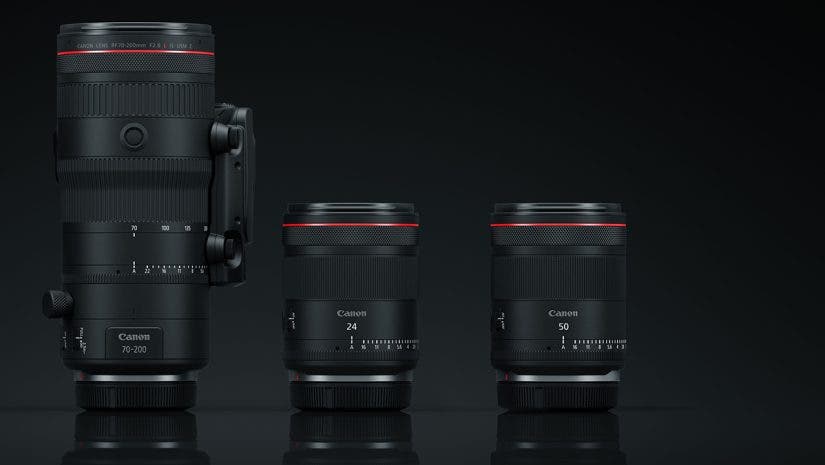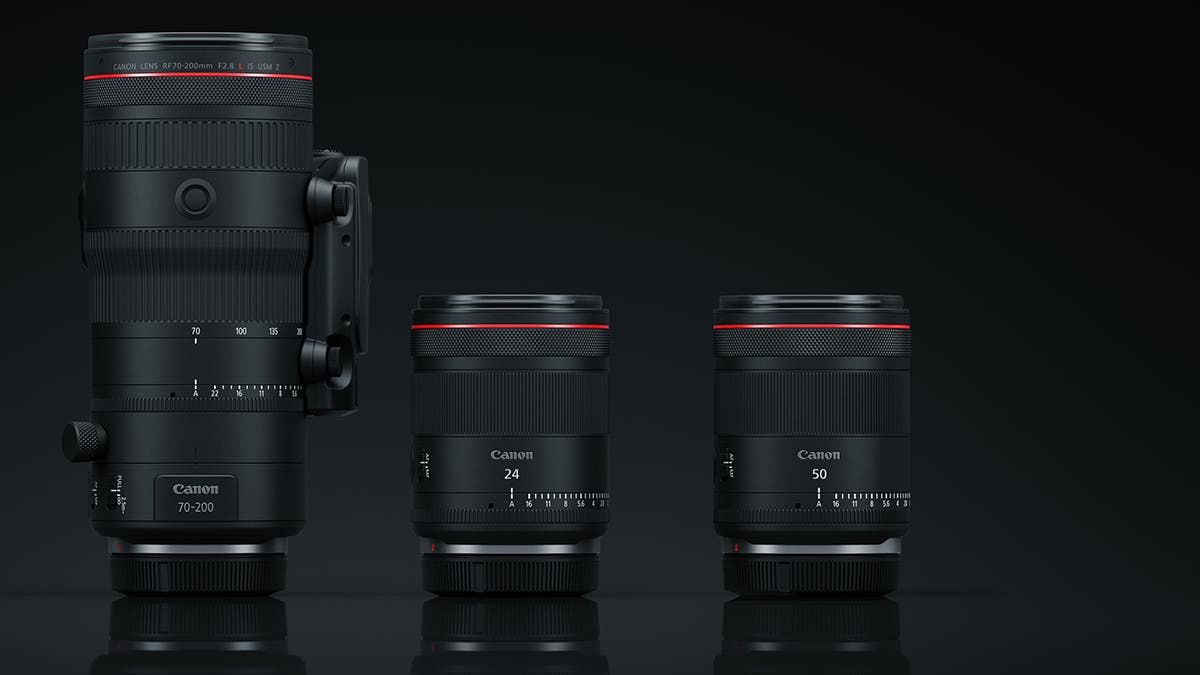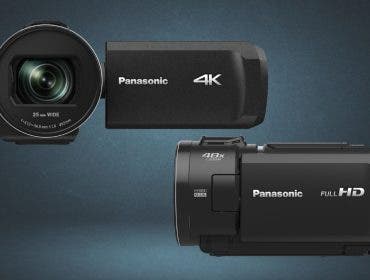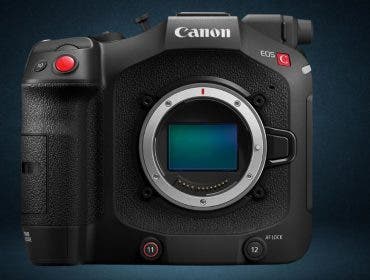Hybrid shooters and content creators, listen up. Canon released not one, not two, or three, but four new lenses aimed directly at hybrid shooters. The four new lenses are versatile for both photo and video. They combine some of the best features commonly equipped on video lenses with some of the best features for photography to create some of the best hybrid lenses on the market for Canon mirrorless shooters. The announcement includes two new prime lenses, one new zoom, and one dual lens compatible with Canon VR. Keep reading to find out more about these four outstanding new lenses.
The New Lenses
- Canon RF24mm F 1.4 L VCM
- Canon RF50mm F1.4 L VCM
- Canon RF70-200mm F2.8 L IS USM – Black
- Canon RF70-200mm F2.8 L IS USM – White
- Canon RF-S 7.8mm F4 STM Dual Lens
Key Features of the New Lenses
- Manual Iris Rings for Video Shooters
- Minimal Focus Breathing
- Lenses Designed for Photo and Video Shooters
What’s New About the New Lenses?
Canon has combined these four lenses into one release. They are all considered excellent “hybrid lenses” designed for photographers and videographers. The three standard lenses share a few common features, including a dedicated manual iris ring and hardly noticeable focus breathing. Wide maximum apertures give both photo and video shooters more options when it comes to shooting in low light and when you’re looking to have an astounding amount of beautifully buttery smooth bokeh. Finally, the two new standard primes use a new linear focus motor called a Voice Coil Motor. Let’s review some of the best new features of these new lenses.

Voice Coil Motor
The two new standard primes include a new linear focus motor that is incredible for both stills and video. The Voice Coil Motor is said to be virtually silent, and it works together with a Nano USM to offer incredibly fast and quiet autofocus. For the creator, this translates to an autofocus system that will focus quickly and stay focused at all times, even when your subject is moving or the ambient light is low. These are the first lenses to include the new Voice Coil Motor, and this is undoubtedly an exciting announcement for the future of autofocus on hybrid lenses.
Minimal Focus Breathing
The RF 70-200mm f2.8, RF 24mm F1.4, and RF 50mm F1.4 all have minimal focus breathing that is hardly noticeable. Whether you’re a landscape photographer doing a focus stack or a videographer using rack focus, minimal focusing breathing is a signature of high-end lenses and a feature you’ll love. The lenses already have very low focus breathing, to begin with, but this is reduced even further with electronic breathing correction, which brings the focus breathing within 1.0% of the entire range. Canon emphasized minimal focus breathing to help make these lenses perfect for hybrid shooters.
Internal Zoom 70-200mm
Canon has built the 70-200mm F2.8 lens with an internal zoom. The internal zoom ring throw is very short, making it easy to quickly and easily adjust the zoom with just the flick of a thumb. Additionally, you can adjust the zoom without changing the weight distribution of the lens to avoid the need to rebalance your gimbal for video shooters. Internal zooms are incredibly versatile for video shooters for various situations, making this lens a must-have for those who take their video seriously.
New Lens for VR Creators

The new Canon RF-S 7.8mm F4 L STM Dual lens allows creators to tell their stories through photos or videos with 3D depth. Compatible with the EOS R7, Canon describes this lens as an “excellent entry point for creators looking to enter the Canon EOS VR System.” A 60-degree field of view renders images and video similar to human vision, and the autofocus mechanism can focus both the left and right lenses simultaneously with a gear-type STM motor, comparable to other RF-series lenses. Finally, a minimum focusing distance of just 5.9” (0.15m) and a maximum magnification of 0.07x give this lens a unique look at macro subjects.
Who Should Buy These Canon Hybrid Lenses?
All four new lenses are targeted toward hybrid shooters and content creators. These lenses blend the best of both worlds in photo and video-specific lenses, giving you the best features to allow stunning footage in all forms. With excellent focal range coverage, wide maximum apertures, high-speed and quiet autofocus, and minimal focus breathing, Canon left no stone unturned regarding the essential features to include on a hybrid lens. If you want to start with Canon EOS VR and shoot on an EOS R7, the RF-S 7.8mm F4 L STM Dual Lens is a great choice.
Comparable Lenses
Recently, Canon released a wildly popular RF 24-105mm F2.8 L IS USM Z Lens, which pairs exceptionally well with any of the lenses on this list, specifically with the new 70-200mm. Also, including an internal zoom and many of the same hybrid features you see on these lenses, the 24-105mm is a workhorse for numerous kinds of photo and video shooters. In fact, the new 70-200mm uses the same build and case as the 24-105mm, so photographers familiar with this lens will have no problem picking up the Canon RF 70-200mm F2.8 USM Lens.
Conclusion
If you’re a Canon RF hybrid shooter, you certainly have much to consider after this new lens announcement. Two new primes with a maximum aperture of F1.4 promise fantastic low-light performance and a brand-new autofocus system. A new zoom lens has features that appeal to photo and video creators, including internal zoom, minimal focus breathing, and a short zoom ring. And lastly, for creators looking to dive into the VR space, the new dual-lens can give a 3D, true-to-life view of whatever you capture. Canon RF shooters, don’t wait to pick up these incredible new hybrid lenses!






